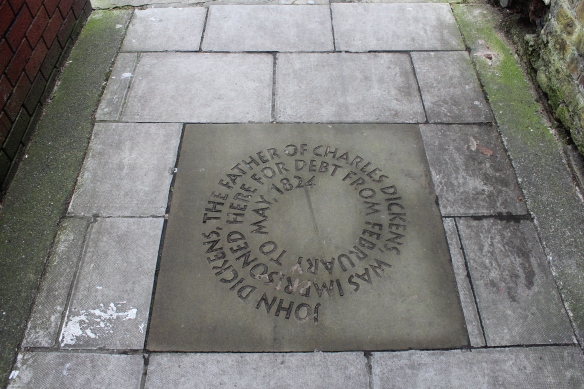 Surely a sign of a good guide book is that it helps you discover new places and inspires you to visit them. And this being the case, Kris and Nina Hollington’s new tome on Criminal London must be a good one indeed as it’s already spurred the Londonphile to set off to explore a new site. And so this is the book review that turned into a blog post…
Surely a sign of a good guide book is that it helps you discover new places and inspires you to visit them. And this being the case, Kris and Nina Hollington’s new tome on Criminal London must be a good one indeed as it’s already spurred the Londonphile to set off to explore a new site. And so this is the book review that turned into a blog post…
Criminal London: A Sightseer’s Guide to the Capital of Crime – to be published on March 14th – is an extensive (336 pages!), well-researched guide to the darker side of London, which is well illustrated with strong photographs (and the odd drawing of sites no longer in existence). It includes a nice mix of the historical (Bedlam, King’s Bench Prison), the gruesome (good old Jack and numerous other spillers of blood), and the downright odd (The Murder Bag – actually both gruesome and odd) – with a touch of espionage thrown in for good measure (Litvinenko). Neatly divided into south, east, north and west London, all up 124 sites are covered, along with three extensive walks following in the footsteps of the Krays, Arthur Conan Doyle and Jack the Ripper.
As soon as I saw number 11 (south) I knew I would be heading off to visit what remains of Southwark’s Marshalsea Debtors’ Prison. Marshalsea is most famously known as the place of incarceration for Charles Dickens’ family when father John could no longer pay the bills, an event which meant a twelve-year-old Charles had to take work in a blacking factory. Dickens’ time visiting his family (who were all staying at the prison, as was the practice) and the lengthy walk he took across London each day to do so, had a lasting impact on the author, to say the very least. These experiences inspired his social conscience and the prison itself features in Little Dorrit. Dickens later secured accommodation closer to his family, in nearby Lant Street, where a plaque commemorates his stay.
While all that remains of the complex – which closed in 1842 – is the south wall, it is still an evocative place, with its old bricks and lamps (I doubt the authenticity of these as they now light the alleyway leading – rather appropriately – to Southwark Coroner’s Court, but they look good). Two memorials inscribed on the ground in the alley commemorate the site and John Dickens. The wall is today situated within St George’s Churchyard Gardens on Tabard Street – a former burial ground that is now decorated with some of the old gravestones.
Kris Hollington has been writing on London crime for a number of years – and his expertise really comes through in this guide. It’s already had me out on the streets exploring London’s darker history and will hopefully leave you similarly inspired. Criminal London is published by Aurum Press and will retail at £10.99.
WIN A COPY: And thanks to Aurum I have a copy to give away! Just post a comment below or send a tweet to @londonphile to enter. Competition closes 1pm Saturday 30th March 2013. A winner will be selected randomly and contacted directly.





